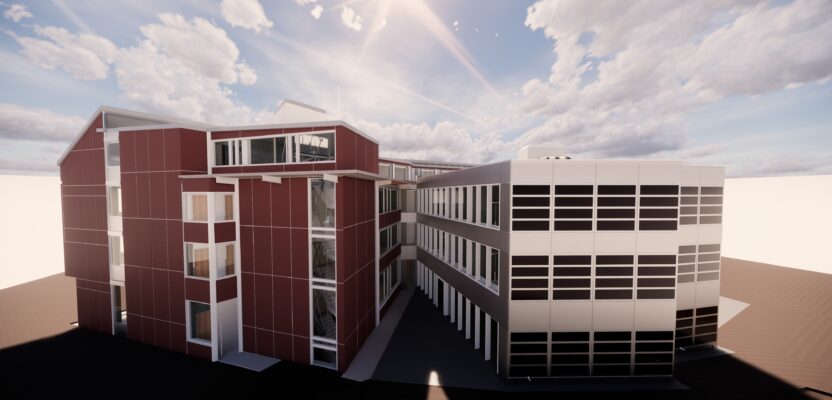This innovative building information modeling tool aims to reduce the construction sector’s carbon footprint. But unlike other practices, it begins at the design phase.
The construction sector is in a conundrum. Decades of non-stop sawing and hammering have been wonderful for the world’s economy yet dismal for the environment. In the latest figures from the United Nations, construction-related activities rank among the world’s top greenhouse gas (GHG) emissions, spewing some 10 giga tons of carbon dioxide in 2019 alone.
For a huge industry that provides jobs to about 220 million people, as well as generating a sizable chunk of the world’s GDP ($4 trillion), reducing the construction sector’s ecological footprint can be a challenge. As demand for new dwellings, better roads, and additional workplaces continue to be uninterrupted, providing all the required materials to satisfy the need to expand and build up often come at a steep environmental cost.
Estimating the amount of carbon produced by the construction sector is necessary if it has to be reduced. It is not easy. Crunching values for carbon dioxide, considered the most important indicator of all GHG emissions, is still evolving as various techniques and tools are being proposed by different groups. In more advanced countries, the most popular way to record a building’s environmental impact follows the Life Cycle Assessment (LCA) method, a cradle-to-grave approach where the carbon and energy values of every construction material used in erecting a building is tracked and quantified.
However, due to their inherently high-data demands and computing requirements, LCAs are complicated, costly, and laborious to complete. As such, most firms tend to carry them out only during the later stages of a building’s design process when data is available or after the building has been constructed. At this point, it is often too late to improve the environmental performance of a building’s design, thus defeating the very purpose of LCAs.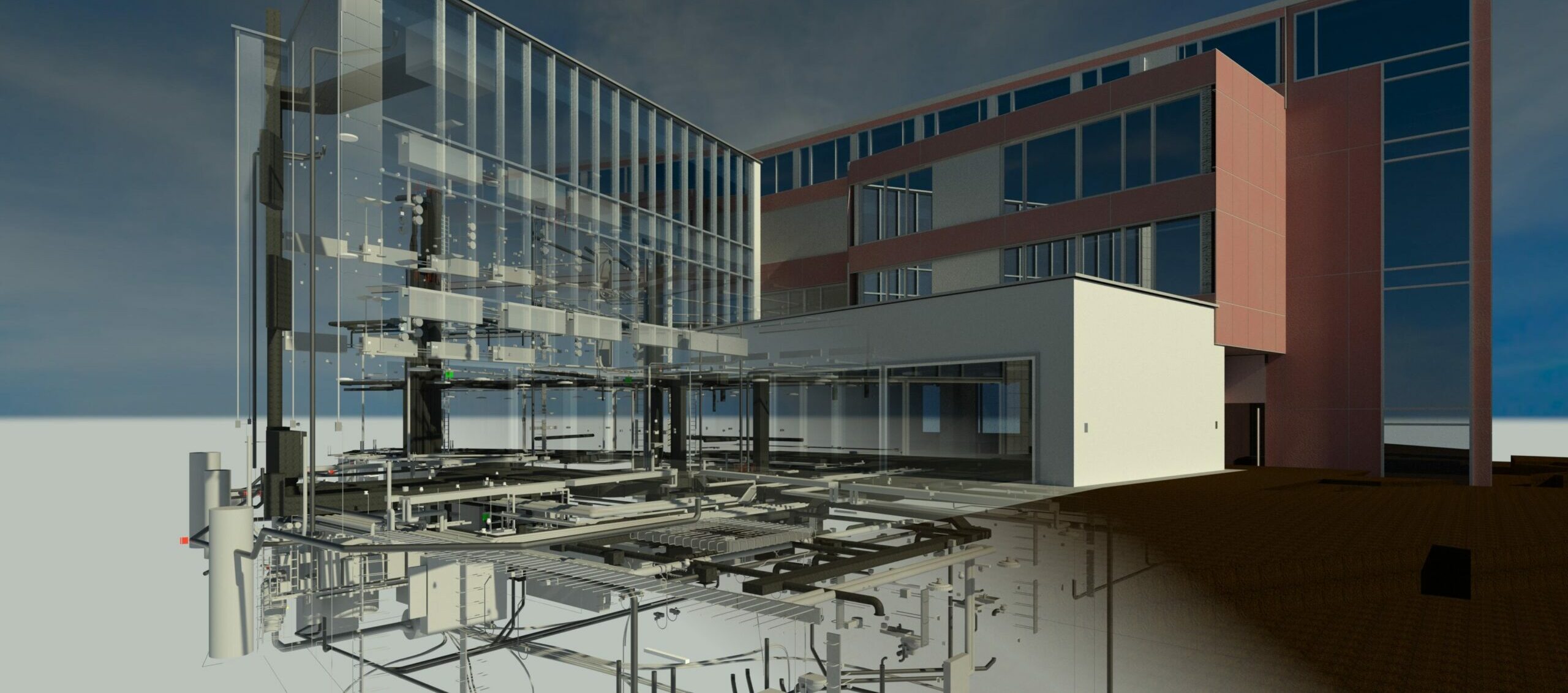
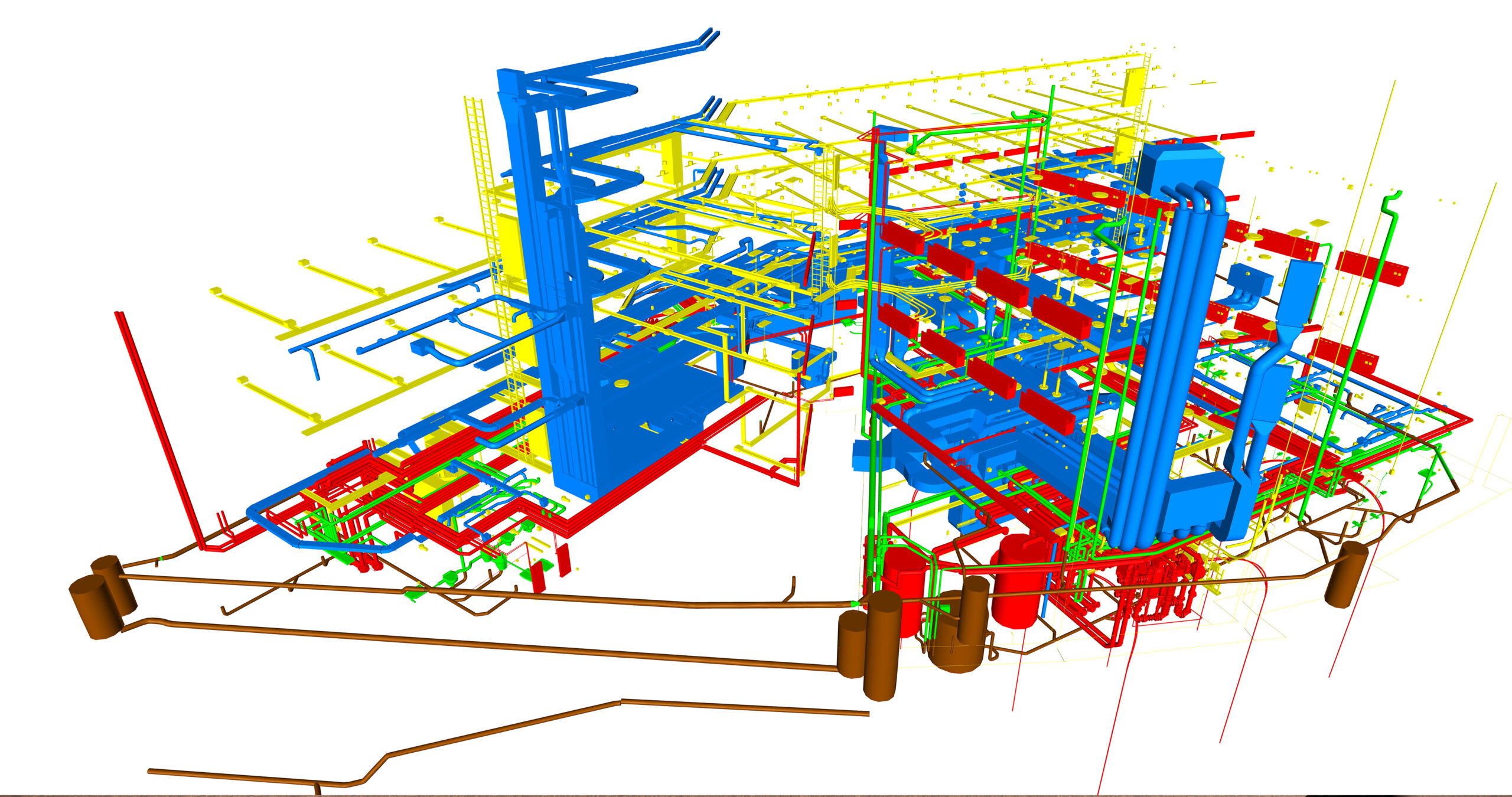
BIM model renderings showing various parts of the Basler & Hofmann building. It is one of the few structures in Switzerland to fully embrace BIM for the project’s full lifecycle, from design to planning and delivery. (Images © Basler & Hofmann AG)
BIM to the rescue
A team of experts in Europe, though, may have found a solution. Their ingenious approach is based on the use of Building Information Modeling (BIM) as a tool to assess a structure’s environmental impact at the onset of its design.
“Designers should consider the environment when selecting building materials,” says Gianluca Genova, a BIM specialist at Basler & Hofmann AG, an engineering and planning company based in Switzerland. “A promising way to tackle this challenge is by integrating Life Cycle Assessment data into BIM platforms.”

Gianluca Genova
As the head of the company’s digital innovation laboratory, Genova believes that a streamlined BIM-based LCA tool can allow building professionals to use life-cycle assessments more efficiently in their daily work. “This tool can support the making of informed choices of construction materials during the entire building design phase.”
Genova developed this innovative BIM-based LCA tool while completing his master’s degree on Integrated Building Systems at the Swiss Federal Institute of Technology in Zurich. He worked together with Alexander Hollberg, an architectural engineer with a PhD in environmental science, architectural design, and building performance assessment. Hollberg was then a postdoc at the Chair for Sustainable Construction in the same university.
“Since the 1970s, most countries have focused on increasing the energy efficiency of buildings when they are already constructed,” says Hollberg. “While this successfully reduced the operational energy demand and related carbon emissions of these structures, their so-called embodied energy and emissions have also gained importance.”

Alexander Hollberg
This embodied environmental impact is the sum of all the energy consumed and the GHG emitted from the extraction and manufacturing of all the materials used to construct a building, including their transportation and installation. Consequently, this value is sealed in the building’s structure as soon as it is built. In comparison, a building’s operational energy consumption and GHG emissions varies and can even be reduced over its lifetime, mainly through the use of renewable energy and the installation of energy-efficient cooling and heating systems.
“Nowadays, the share of the embodied environmental impact of new buildings usually makes up more than half of the total operational GHG that they produce in a span of 50 years,” says Hollberg. “This clearly shows that a lifecycle perspective is needed to optimize the design of new buildings.”
Link up to scale up
Hollberg, an assistant professor for Computational Sustainable Design at Chalmers University of Technology in Sweden, clearly knows the challenges in carrying out LCAs. “These assessments require a lot of data inputs and are quite time-consuming to perform,” he says. “Using BIM provides a big potential to make LCA efforts applicable on a larger scale.”
Unlike other LCAs, their approach follows a dynamic routine, which makes this scaling-up possible. “LCA workflows in our tool can be analyzed in a BIM environment with the help of Revit as BIM author tool and Dynamo as an integrated parametric solution,” says Genova. “While designers create a BIM model of a structure, all the building objects and their material specifications are dynamically linked to the national LCA databases. This then allows the project’s architects and engineers to directly calculate the embodied environmental impacts of the structure within the BIM platform.”
With their method, continuous environmental assessments can be done throughout the design process. “Taking all the data from the BIM model and connecting them to the LCA databases reduces the effort of the repetitive data input into LCA tools,” says Genova.
This novel feature of their work, describes Hollberg, comes from using a script that assigns an identification (ID) code for each building material that enters the BIM model. “This ID allows us to make that dynamic link to the LCA databases, which then permits us to calculate the embodied GHG emissions directly while changes to the BIM model are being made.”
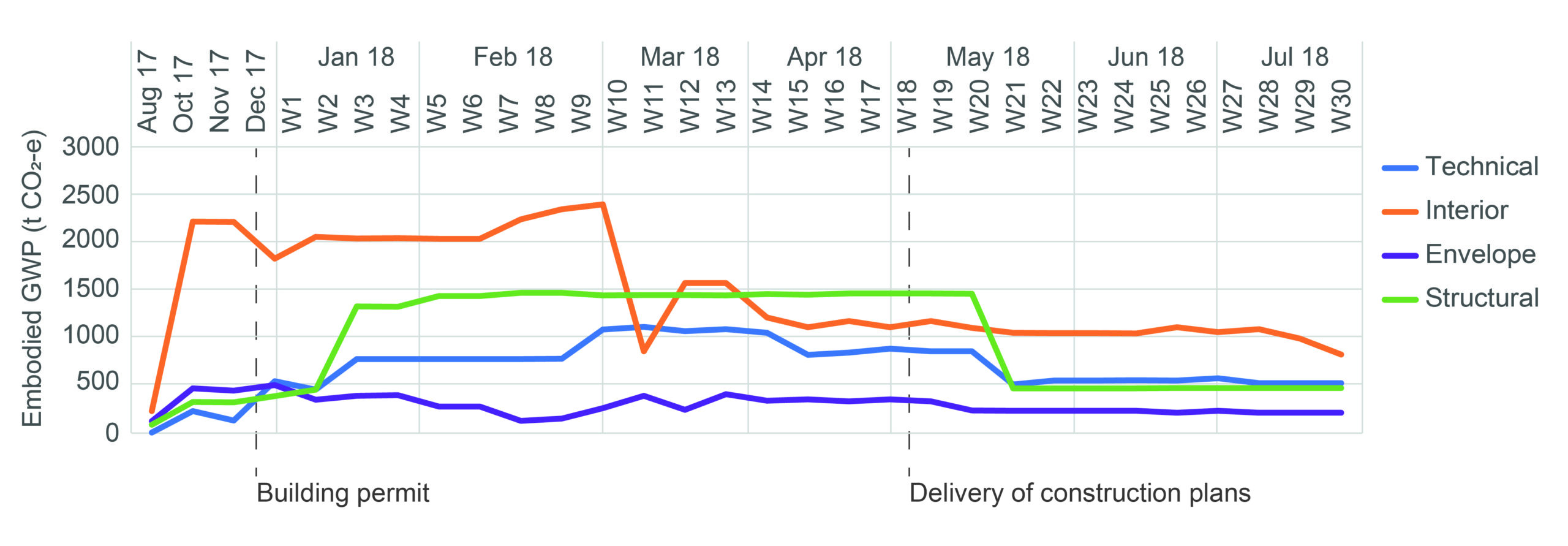
Evolution of the embodied GWP, in carbon dioxide equivalents (tons), as measured by the BIM-LCA tool during the entire design process The colored lines represent various building categories in monthly and weekly trends.
To test how quick and spot-on their results are in comparison with other conventional LCA approaches, they applied their BIM-based LCA tool on the first building in Switzerland built entirely on BIM and designed without printed plans. That building, owned by Basler & Hofmann AG, won the international AEC Excellence Awards in 2018 for implementing a fully connected BIM in crafting the building’s digital plans and construction.
“It was probably the most accurate BIM model of a building in Switzerland at that time,” says Hollberg.
During the test, Genova followed the building’s BIM design evolution for 12 months, while at the same time tracking its LCA numbers. “The design process of the building was continuous, so consequently the BIM model and its LCA values also evolved constantly,” says Genova.
As the BIM designers of the project added and modified various elements of the building’s model, Genova and Hollberg also measured the environmental impact of the designs based on the global warming potential (GWP) of the building materials.
GWP is an indicator of how much heat the emission of one ton of a greenhouse gas will absorb over a given period of time, relative to the same amount of carbon dioxide. As such, it is expressed in carbon dioxide equivalents or CO2-e. A high GWP value means a high potential for a building material’s GHG emissions to warm the earth.
Aside from its capability to scale up, their BIM-LCA approach offers another advantage. From the time when the BIM model’s level of development (LOD) was still low at the start of the project as the company applied for building permit, up to the last stage when the construction plans were finished with a very high LOD (approximately 350 to 400), they could also monitor the embodied GWP of each building element (see graph).
“By gathering all the LCA data and linking them in a BIM model, we could also focus on specific building categories,” says Genova, “Throughout every step of the design process, our tool was able to track the environmental impact of every technical, interior, envelope, and structural element of the building.”
A full version of their work, including their methods and results, is published in Automation in Construction, a scientific journal.
Challenges and collaboration
Like any new endeavor, there are limits to the successful application of their BIM-based LCA tool. The most important ones come from two sources. “First, we need an accurate bill of quantities,” says Hollberg. “And second, we must have accessible LCA databases of the building materials.”
While the bill of quantities can be readily prepared by quantity surveyors and building estimators, not all countries have a comprehensive LCA database that can provide carbon and energy values for every building component. Most European countries are ahead with their compilation of this information, while the U.S. has its own lifecycle inventory database managed by the National Renewable Energy Laboratory and its partners. The rest of the world needs to catch up if other countries want to digitally revolutionize their own construction sectors.
“For this project, we used the KBOB, which is the national LCA database for building materials in Switzerland,” says Hollberg. “Many countries publish these kinds of databases, and they could be easily integrated to any BIM model.”
Aside from availability of data, another factor that could provide a setback in BIM implementation are the stakeholders themselves. “There are many different actors involved in the construction of a building and this requires a lot of data exchange,” says Hollberg. “The willingness to share data is still a difficulty in the sector.”
Fortunately, they did not experience this. “The collaboration was great as Gianluca was already working at Basler & Hofmann. He had access to the BIM model and the team of designers. As such, he had firsthand knowledge about how the BIM model was being used and its workflows,” says Hollberg. “I just tried to steer the project in the direction where I saw a research gap and an academic interest.”
Genova shares the same view. “By working together with Alex and with professor Guillaume Habert, head of the Chair for Sustainable Construction in the university, we were able to select a unique research project that had an excellent real-life bond,” he says. “Thanks to their support, we were able to use the opportunity to gain lot of technical experience and come up with interesting results.”
Beaming into a sustainable future
According to Genova, BIM is now playing a significant role in the construction industry’s digitalization journey. “I think the full implementation of BIM will alter how we design and build,” he says. “The increasing use of BIM models is changing how we communicate, and surprisingly, also our creative thinking. BIM’s structured information storing capabilities will help us tackle complex design problems in the future and allow us to focus more on their solutions.”
And as for solving the environmental impacts of the construction industry, is it still too far to reach or is the sector on the right track?
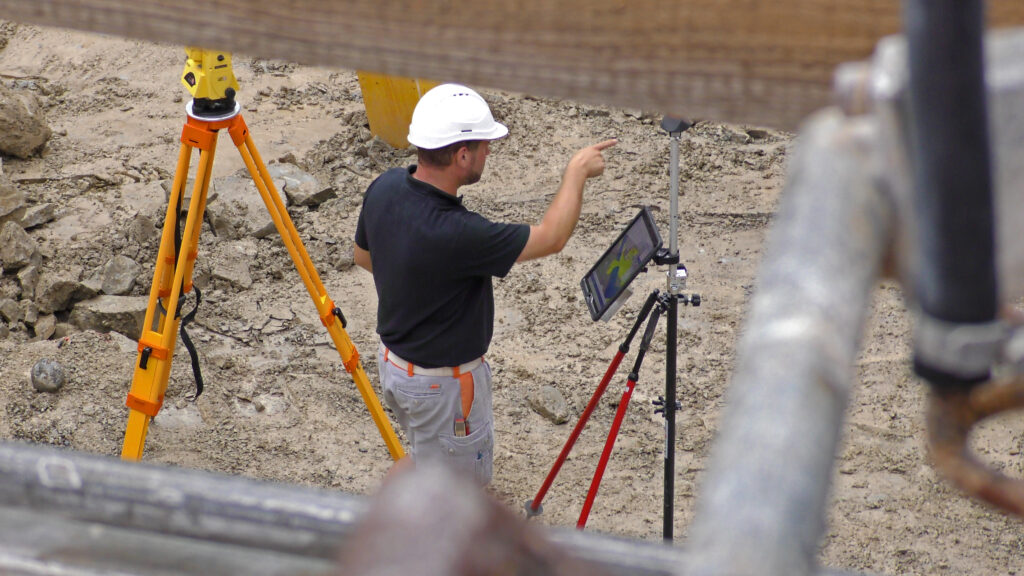
The Basler & Hofmann building’s design and construction has been carried out directly from its BIM digital model, accessible via a tablet. The construction’s complete digital twin is available to be used for the management of the building or for potential renovations. (Photos © Basler & Hofmann AG)
Hollberg thinks that there are many developments going in the right direction, but at the same time they are too slow. “We really need to speed things up,” he says. “And we have to consider the lock-in effect we have with buildings and infrastructure projects because we do not want to renovate a building in its first 30 years.”
Because of his confidence in the usefulness of LCAs, in 2016 Hollberg co-founded CAALA, a start-up based in Munich, Germany. CAALA develops a design-integrated CAD/BIM plug-in for LCAs that is now being used by project developers, sustainability consultants, and building owners. “If we want to be carbon neutral by 2050, all our new buildings must be compliant today,” he says. “It is possible but challenging.”
Genova agrees, while also pointing out that the negative environmental impacts of the industry can no longer be neglected. “We need to understand that we live in a construction industry built upon techniques and methods with a mentality from the industrialization era,” he says. But he is also optimistic about the future. “Environmental awareness is taught very well right now to the younger generation. And with the developments in materials science, as well as new construction techniques and digital-driven design methods, I firmly believe that it would be possible to generate functionally sufficient living spaces with minimum environmental impact.”
He might be right. Previously unheard of topics related to climate-change and low-carbon buildings are now front and center in important construction industry gatherings such as BIM World in Paris and the Futurebuild event in London. This trend seems to indicate that the construction sector is listening to the green call. And it has every reason to do so. The new U.S. government’s infrastructure bill is aiming to fund clean construction projects, while the European Union has launched its own Green Deal Initiative, whose flagship program includes the use of climate-neutral construction materials within its 27-member countries.
Decarbonizing the way be build, however, will require an overhaul of the construction sector, according to the Global Alliance for Buildings and Construction, an international coalition of 189 governments and private sector organizations that campaigns for sustainable-built environments. Among tools that it promotes include life-cycle analysis and BIM technology.
The integration of these two tools, according to Genova, has an enormous potential in construction as the industry threads toward a future focused on sustainable development. “Implementing LCA in BIM will allow us to make responsible design decisions to reduce the negative environmental impacts of buildings,” he says.
As the world cannot simply continue building up without further harming the environment, using BIM technology to help us choose the greenest construction options could just be our way out of this problem.

